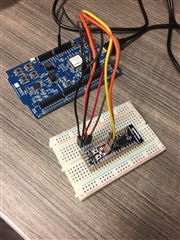Hello,
I purchased a nRF52 DK board and sparkfun nrf52832 breakout board, and was successful with blinking the LED on the breakout board.
In order to test if I would manipulate the PCB, I needed to see if I could successfully assemble the PCB. Thus, I copied the PCB design of Sparkfun nRF52832 Breakout Board from the open source, sent them to manufacturer, and assembled them. All the component values are correct, because I copied them exactly from the Sparkfun Opern source.
However, after I assembled the board and tried to program it with nRFgo Studio, there is a error saying "No Device connected, or readback protection may be set". In order to make sure it is not a soldering problem, I assembled multiple boards, but they all ran into the same error. It looks like nRFgo Studio cannot recognize the board.
All the components are exactly the same. Copied the schematic, BOM, and made sure they are properly soldered. The only difference is that on the MCU it says," N52832 QFAAE1" while on the breakout board it says "QFAAB0" but I don't think this makes a difference.
Do I have to boot the mcu with something? or is there a step I need to take before programming the chip? How can I make nRFgo studio recognize this "custom" board? (well, "copied" to be exact".
It would be a huge help if this problem can be solved..... Thank you!

included a picture just for a reference.


